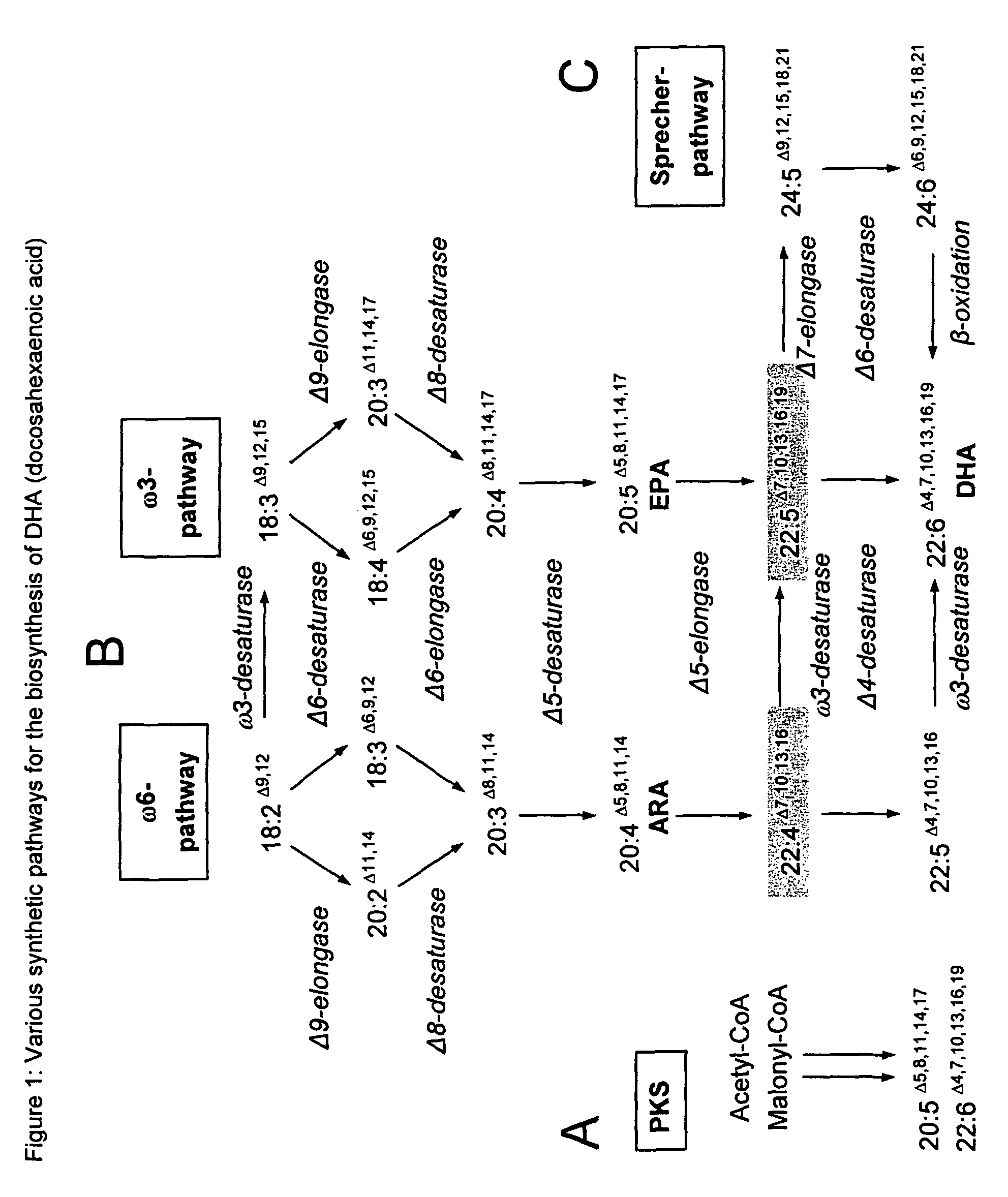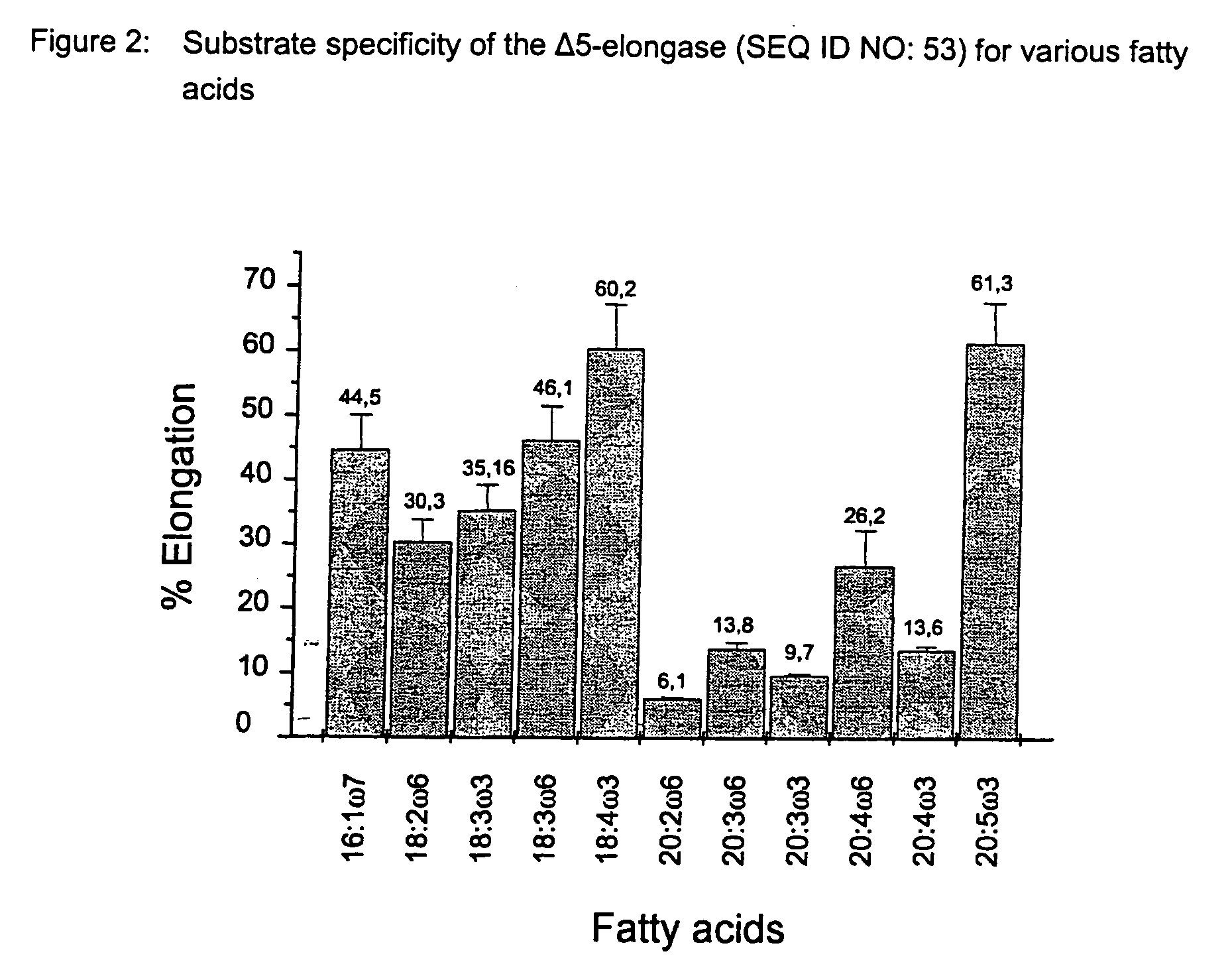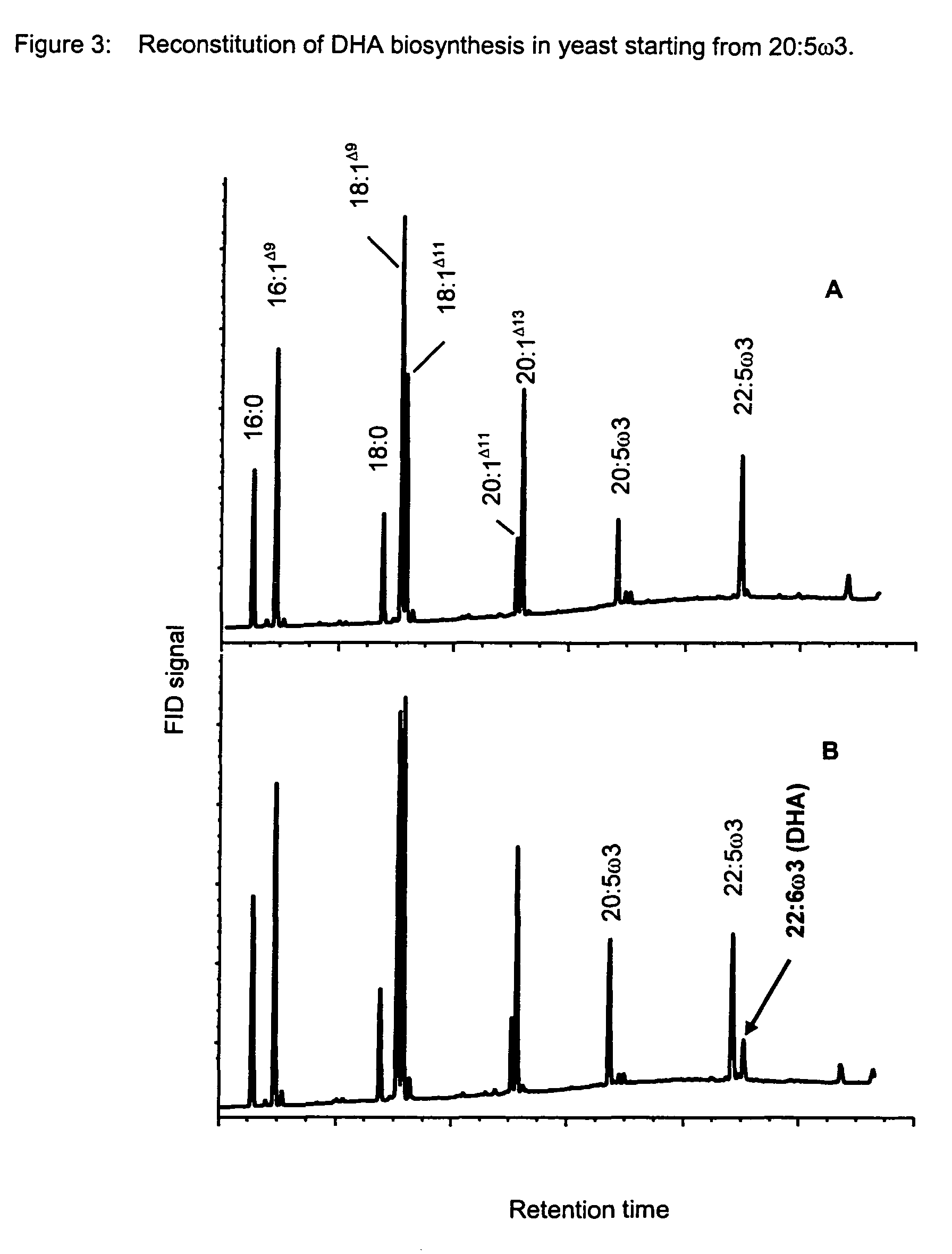Method for the production of multiple-unsaturated fatty acids in transgenic organisms
a technology of polyunsaturated fatty acids and transgenic organisms, which is applied in the direction of fatty-oil/fat refining, bulk chemical production, metabolic disorder, etc., can solve the problems of time-consuming and difficult process of selecting strains with an improved production of a particular molecule such as polyunsaturated fatty acids, and insufficient biochemical characterization of various desaturases to da
- Summary
- Abstract
- Description
- Claims
- Application Information
AI Technical Summary
Benefits of technology
Problems solved by technology
Method used
Image
Examples
example 1
General Cloning Methods
[0327]The cloning methods such as, for example, restriction cleavages, agarose gel electrophoresis, purification of DNA fragments, transfer of nucleic acids to nitrocellulose and nylon membranes, linkage of DNA fragments, transformation of E. coli cells, bacterial cultures and the sequence analysis of recombinant DNA were carried out as described by Sambrook et al. (1989) (Cold Spring Harbor Laboratory Press: ISBN 0-87969-309-6).
example 2
Sequence Analysis of Recombinant DNA
[0328]Recombinant DNA molecules were sequenced with an ABI laser fluorescence DNA sequencer by the method of Sanger (Sanger et al. (1977) Proc. Natl. Acad. Sci. USA 74, 5463-5467). Fragments obtained by polymerase chain reaction were sequenced and verified to avoid polymerase errors in constructs to be expressed.
example 3
Cloning of Oncorhynchus mykiss Genes
[0329]The search for conserved regions in the protein sequences corresponding to the elongase genes detailed in the application identified two sequences with corresponding motifs in the Genbank sequence database.
[0330]
Name of geneGenbank No.Amino acidsOmELO2CA385234, CA364848,264CA366480OmELO3CA360014, CA350786295
[0331]Oncoryhnchus mykiss total RNA was isolated with the aid of the RNAeasy kit from Qiagen (Valencia, Calif., US). Poly-A+ RNA (mRNA) was isolated from the total RNA with the aid of oligo-dT-cellulose (Sambrook et al., 1989). The RNA was subjected to reverse transcription using the Reverse Transcription System kit from Promega, and the cDNA synthesized was cloned into the vector lambda ZAP (lambda ZAP Gold, Stratagene). The cDNA was then unpackaged in accordance with the manufacturer's instructions to give the plasmid DNA. The cDNA plasmid library was then used for the PCR for cloning expression plasmids.
PUM
| Property | Measurement | Unit |
|---|---|---|
| Fraction | aaaaa | aaaaa |
| Percent by mass | aaaaa | aaaaa |
| Percent by mass | aaaaa | aaaaa |
Abstract
Description
Claims
Application Information
 Login to View More
Login to View More - R&D
- Intellectual Property
- Life Sciences
- Materials
- Tech Scout
- Unparalleled Data Quality
- Higher Quality Content
- 60% Fewer Hallucinations
Browse by: Latest US Patents, China's latest patents, Technical Efficacy Thesaurus, Application Domain, Technology Topic, Popular Technical Reports.
© 2025 PatSnap. All rights reserved.Legal|Privacy policy|Modern Slavery Act Transparency Statement|Sitemap|About US| Contact US: help@patsnap.com



